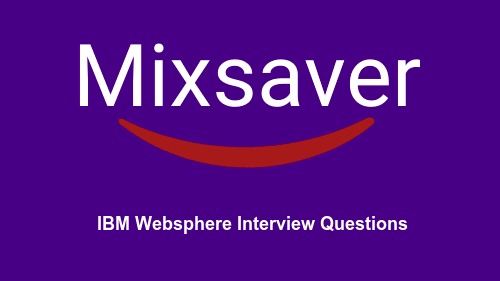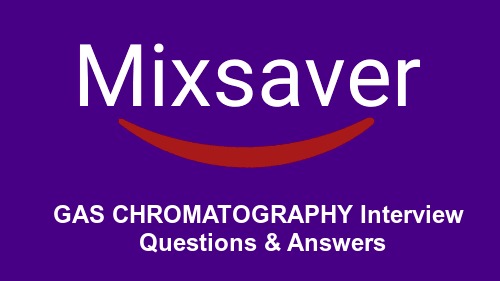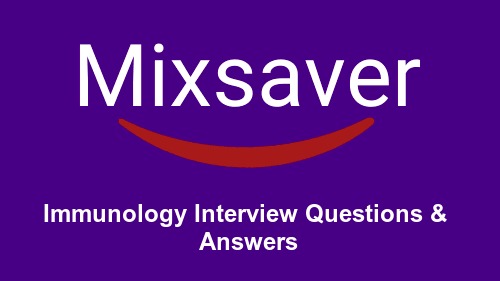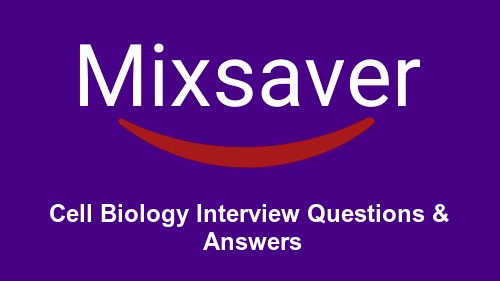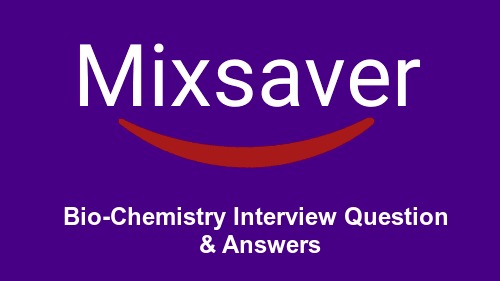1) Explain about web sphere?
The word web sphere popularly refers to IBM middleware technology products. Web sphere is known for its turn key operation in e business applications. It has run time components and tools which can help in creating applications which run on WAS. WAS refers to web sphere application server.
2) Explain about web sphere commerce?
IBM web sphere commerce has a single platform which offers complete ecommerce solutions to developers. It can be very productive if you are planning to do business with consumers, business and indirectly through channel partners. This can be used to perform business with consumers, business and channel partners altogether.
3) Detail about the architecture of web sphere?
Web Sphere is built on three main components they are
• Database
• J2EE application server
• A web server
The databases which it supports are
• DB2
• Oracle
• Cloudscape
Application server is IBMWAS and the supported web servers are
• IBM server
• Microsoft IIS
• Sun web server
4) State some of the features present in web sphere?
Some of the features which are present in web sphere are: -
• Order management
• Web sphere commerce accelerator
• Analytical and business intelligence
• Open standards such as Java, EJB, etc
• Web sphere commerce payments and customer care, etc
5) Explain about IBM Web Sphere edge server?
Web sphere edge server is used to improve the performance of web based systems. It can be used as forward or proxy server. Basically four components are present in the web sphere they are Network dispatcher, Caching proxy, Content distribution and application service at the edge.
6) Explain about extended deployment?
Web sphere application server extended deployment increases the functionality of the server in two main areas they are manageability and performance. Dynamic virtualization between servers is possible with the help of XD. A stand alone distributed cache was added to it under the performance header, it is known as Object Grid.
7) Explain about the security features present in WAS?
Security model for web sphere is primarily based on JAVA EE security model. It also depends upon the operating system. User authentication and authorization mechanisms are also provided in WAS. Light weight third party authentication mechanism is the main security feature present in WAS.
8) Explain about asymmetric clustering?
Asymmetric clustering applications are primarily used in electronic trading systems employed in banks. Some of the features are, partitions can be declared during run time and are usually run on a single cluster at a time. Work specific to a particular can be routed to that cluster.
9) Explain the various Administrator benefits using Web sphere?
Web sphere almost reduces the work of server administrator as he can manage load on servers efficiently without any hassles. It also gives him flexibility to divide the load and applications among different server farms. He can also predict about the incoming load on servers. Email alerts, restart options, memory leak detection, etc.
10) Explain about caching proxy of IBM Web sphere Edge sphere?
A caching proxy can be configured in forward direction or as a proxy. Content requested by the user is cached by edge before sending or adhering to the query. Page fragments arising from JSP or servlets are cached by Edge and the caching process is slow. Performance and scalability of J2EE applications can be increased by edge.
11) Explain about the network deployment feature present in WAS?
Managing singletons will be a thing of the past and it also provides hot recovery of singletons which makes you forget about your GC collected singletons. Transaction logs can stored on a shared file system. For clustering run time operations deployment manager`s role was eliminated. J2EE failover support and cell configuration support is also present.
12) Explain about IBM web sphere integration developer?
Web sphere integration developer provides an IDE to build applications based on service oriented architecture. Web sphere process server and web sphere ESB were built with WID. WID was built with RAD Eclipse based technology.
13) Explain about compute Grid?
Compute grid is also known as Web sphere batch. Web sphere extended deployment offers a Java batch processing system called as Compute Grid. This forms an additional feature to Web sphere network environment. Various features are provided which help a developer to create, manage and execute batch jobs. Job scheduler, xJCL, batch container and batch programming controller.
14) Explain about web sphere MQ Real time transport?
This feature is very useful in instant messaging across different clients through intranet and internet. This supports high volume and high performance across different clients. It uses the concept of light weight transport which is again based on IP rather than the queue process.
15) Explain about Web sphere MQ JMS Provider?
Web sphere MQ and Web Sphere Business integration manager Broker are very useful in providing Java messaging services to wide range of clients (publisher –subscribe, point to point). Java classes are chiefly responsible for translating the API calls to API`s defined by web sphere. It is very useful to have knowledge of Web sphere MQ for proper configuration.
16) Explain the attribute CHANNEL in web sphere MQ?
CHANNEL specifies the name of the server connection channel. Generally this is Web Sphere MQ network abstraction. The default standard used by CHANNEL is SVRCONN which is the server connection channel. This server is generally used to communicate to the queue manager by the client.
17) Is the naming of connection factory independent of the name specified by JMS client?
Yes, the naming of connection factory is independent of the name specified by JMS client. This is made possible by WAS (Web sphere application server) with its resource references. It isolates the application from object names. This feature is important because it gives us the flexibility to change the administered object without changing the JMS client code.
18) How do you specify a jar file to be used by the application, consider that you have many jar files in your system?
classloader
19) What is a managed node?
Node with NodeAgent
20) What is a managed webserver?
Remote webserver access through local (dmgr/cell)
21. What about master repository?
deployment manager contains the MASTER configuration and application files. All updates to the configuration files should go through the deployment manager.
22. Tell me IHS executable files, means bin directory files?
Apache, ApacheMonitor, htpasswd, htdigest, htdbm, ldapstash, httpd.exe
23. Why given the httpd.conf file to installation of plug-in?
identify the web server (port, virtual hosts) to configure the web server definition
24. How to configure remote system httpd.conf file?
select web server machine (remote)
25. Several types of log files in the appserver?
system out, system err, trace, native out , native err, activity.
26. websphere packages?
express, base, network deployment
27. What is the profile?
profiles are a set of files that represent a websphere application server configuration.
28. What is the trace?
A trace is an informational record that is intended for service engineers or developers to use. As such, a trace record might be considerably more complex, verbose and detailed than a message entry.
29. What is heap memory?
Objects storage space for objects references created at run time in a jvm is heap memory.
30. Out of memory exception is there, how to handle that exception?
To incrise heap memory size
31. What about IHS?
IHS (IBM HTTP Server) is one of the web servers. It serves the static content only and it takes up only http requests.
32. What about plug-in?
plug-in is one of the modules it is interface between application server and web server, the plug-in process receives the request from the client first. If the request is for dynamic content, the plug-in diverts the request to the websphere application server. If the request is for static content, the plug-in forwards it to the Http server.
33. What is the global security?
it provides the authentication and authorization for websphere application server domain (administration client or console).
34. How to configure the global security?
open console and then select security option in the right side menu, and then select localOs registry in the user registry, then enter the username, passwords. And again select global security then ltpa option then provide the password, then save the configuration. And restart the deployment server and then relogin the console.
35. What is SSL?
ssl is a protocol for providing encrypted data communications between two processes.
36. What is PMI? How to configure PMI?
monitoring and tuning–>PMI–>select any process (server1, nodeagent, dmgr) and then enable PMI–>then apply and then save. Select performance viewer–>current activity and then select enabled process and click the start monitoring button after that process select.
37. What is the UNIX command of all display server processes?
ps –ef| grep java
38. What is node?
logical group of servers.
39. How to start the server?
startserver.sh server1
40. How you get nodeagent……what you have to install to get nodeagent?
Custom Profile
41. How to add the node?
addnode.sh 8879
42. What is the application server?
The application server provides a runtime environment in which to deploy, manage, and run j2ee applications.
43. What is the node?
A node corresponds to a physical computer system with a distinct IP host address.The node name is usually the same as the host name for the computer.
44. What is the node?
A node corresponds to a physical computer system with a distinct IP host address. The node name is usually the same as the host name for the computer.
45. How many types of profiles are in nd product?
1.deployment manager profiles 2.application server profiles 3.custom profile
46. What is diffrence b/w dmgr and other profiles?
dmgr app custom
1.its used for administration 1.admin console is there 1.plain node purpose of remaining profiles 2.initially one app server there 2.empty node 2.it supports the distributed 3.work independently environment. 4. Put applications 3.it is not included app server 4.admin console is there 5.work independently 6.do not put applications
47. Diff b/w 5.0 and 6.0?
Web Sphere Studio 3.5, comes up with Visual Age for Java. WSAD 5.0 supports J2EE 1.3 java specifications. RAD 6.0 supports J2EE 1.4 and integrated with Eclipse 3.0, UML Visual Editor, Tomcat Jakarta, Ant scripting, EJB universal test client and SOA tools.
48. What is the difference between web server and application server?
Application Server: takes care of Security, Transaction, Multithreading, Resource pooling, load balancing, clustering, performance, highly availability, scalability, etc. Exposes business logic to client applications through various protocols, possibly including HTTP. Supports deployment of .war and .ear files Application server = web server + EJB container.
49. Diff b/w weblogic and websphere?
Both BEA Weblogic and IBM’s WebSphere provide J2EE based application servers which are competitors. WebSphere leverages more on connectivity issues with MQ and legacy systems with strong dominance in J2EE.
50. Some problem is there in web server, so this information which log file contain?
http.log, plugin.log
51. What is jdbc?
jdbc is a low level pure java api used to execute sql statements.
52. What is datasource?
A data source is associated with a jdbc provider that supplies the specific jdbc driver implementation class
53. What is diff b/w type4 and type2?
type4 type2
1. It is pure java oriented 1.it is not a pure java oriented driver 2.require client side software 2.no need any client software
54. Some application not accessing, so what is the problem? This information which log file contains?
systemout, systemerr
55. In type3 client software which machine you have install?
server side machine
56. two databases there (oracle and db2),so I want 3 datasources for oracle and 2 data sources for db2 so create 3 datasource names for oracle and 2datasourcename for db2 is possible or not?
possible
57. What is jndi?
we can register resources in the application server’s java naming and directory interface (jndi) namespace. Client applications can then obtain the references to these resource objects in their programs.
58. Why use the boostrap port number?
client applications use the bootstrap port to access websphere’s built-in object request broker (orb) to use enterprise java beans in applications installed on the application server. The java naming and directory interface service provider url used by the client application needs to reference the bootstrap port to obtain an initial context for looking up ejb’s it wants to use. (For communicate two servers)
59. What are the appserver components?
admin server, web container, ejb container,j2c service, naming server, messaging engine, security server.
60. How to start the server?
startserver.sh server1
42. Packages of websphere?
express, base, network deployment
43. What is webcontainer?
The web container provides a runtime environment for servlets, jsp’s, javabeans, and static content.
44. How to find out free diskspace from command prompt?
du -sk (kb) du -sm (mb)
45. How to find out certain server configuration details like port no, server name, node name, pid?
through admin console.
46. Configure the plug-in through admin console is possible or not?
possible
47. Where to set the path?
environments–>websphere variables
48. How many types of installations?
59. Application installed but not working. What are troubleshooting steps?
see jvm & application are up, check plugin-cfg.xml file for the root context used by the web application if it does not exist generate plugin and restart web server.
50. Applications installed fine, also generated plugin, but application still not working, in this case which log to see?
plugin.log
51. Default admin port?
9060, ssl 9043
52. Default bootstrap port?
2809
53. How to hit application without hitting the web server?
webcontainer port on application server
54. In how many ways you can perform administration?
console,,,JMX
55. No of ways of doing deployments?
Admin console…..jython (jacl) scripts
56. What is CellDiscoveryAddress
Node uses this port to talk to DMGR
57. What is NodeDiscoveryAddress
DMGR uses this port to talk to node
58. How websphere discovers a change in JSP and compiles it?
There is an algorithm that websphere uses to find the timestamp of .jsp and .class files. It checks that timestamp of .class file is always later than its corresponding .jsp file.
59. What is classloader?
60. how do you specify a jar file to be used by the application, consider that you have many jar files in your system?
classloader
61. What is a managed node?
Node with NodeAgent
62. What is a managed webserver?
Remote webserver access through local (dmgr/cell)
